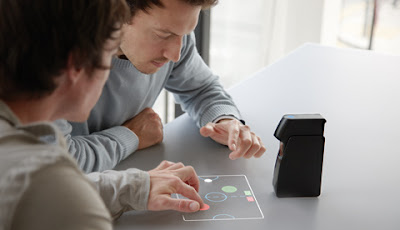
Chanced upon this article in the
Guardian about Josh Silver and his vision (their pun, only borrowed by me) of making the world's poor see. And like any cost effective model, it started with eliminating the middle man. In this case the optician. Take out his fine tuning cost and you can make a pair of spectacles a lot more affordable.
So who will do the tuning then? Well Josh Silver answered that with a question.
What if a pair of glasses could be "tuned" by the wearer him/herself to correct his/her vision?This professor of physics at the Oxford University, then found the answer to this question in a simple principle of optics - The thicker the lens, the more powerful it is. And in a simple marvel of nature - Liquid is a natural magnifier. After that, it was as clear as water. Inside the tough plastic lens of the frame are two clear, circular sacs that can be filled with fluid. The volume of the fluid can be controlled by syringes attached to each arm of the frame.
The wearer adjusts the fluids levels to suit his/her vision. And when one reaches the desired clarity, the sacs are sealed by twisting a small screw and the syringes removed.
His glasses have already found their way to about 15 countries, and about 30,000 of them are already perched on noses there. But retd-Prof. Silver has his sights set far higher. He's looking at India through his fluid filled glasses. By next year, he and his team plan to launch a trial where they hope to find at least a million noses to house their visionary product.
With a target cost of a dollar a piece, the economies of scale that an India and China can add to the pricing formula can definitely make it a reality. Add to that the simplicity of the product that allows it to be mass-produced and not custom-made to vision and one could see the pricing being pulled even lower.
But while he can see a bright future for his product (and for its users), he also sees a lot of scope for improvement. The clunky size and design, being the most pressing one. But Silver is optimistic about being able to make it as delightful to look at, as it is to look though.





